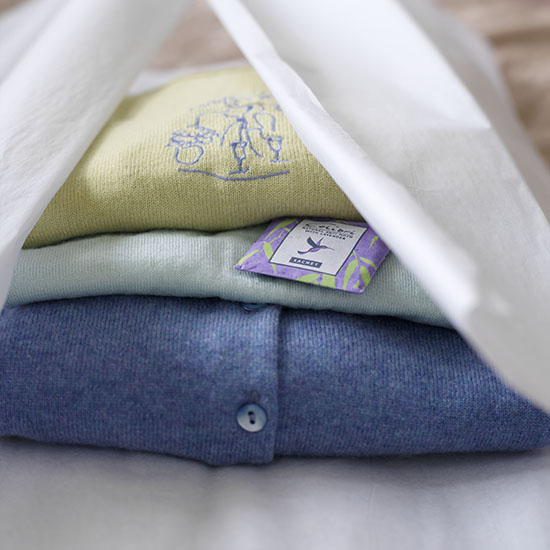Our tips for a moth free home
A mild winter has caused moth numbers to rise and now they're munching their way through Britain. Here are our top tips for a moth free home


Moths love mild and damp conditions and after one of the warmest winters on record these flying pests are now thriving at an epidemic level, especially in cities. Johnson Cleaners has observed that many of its customers have been complaining about moths wreaking havoc and has come up with some expert tips on how to keep homes moth free. Graham Warren of Johnson Cleaners warns "seeing these kinds of moths flying around in your home is a problem but the main problem is their caterpillars, which are doing all the damage".
We all know that sinking feeling after pulling your favourite cashmere cardigan out of the wardrobe only to find its been the victim of a moth feeding frenzy. And prevention is really the only way to be sure that your garments will survive as invisible mending isn't always an option.
Dos
- Spread clothes out in the wardrobe so its harder for larvae to migrate between clothes
- Store valuable clothes in garment bags
- Check regularly for signs of larvae that look like small grains of white rice
- Dry clean valuable garments often to keep the problem at bay
- Carpets should be professionally cleaned every three months to maintain protection
- Vacuum under furniture that sits on top of carpets regularly as this is where moths will breed
- Vacuum areas where clothes are stored for long lengths of time eg. Under the bed
- Use natural products to provide extra protection for clothes and minimize harm to moths, such as Orphea Moth Repellents
Don'ts
- Don't leave dirty clothes in piles for longer than a few days
- Don't leave clothes in dark, undisturbed places if not packaged in plastic bags
7 facts you didn't know about moths
1. There are over 2,500 species of moths in the UK
2. Only six of these species eats clothing - including the Common Clothes Moth and the Case Bearing Clothes Moth 3. It's the caterpillars of the moths that eat clothes, not adult moths
4. Moths are most prevalent between June and October
5. During the 20th century 62 moth species became extinct in Britain
6. Moths are an important part of the food chain, for example blue-tit chicks eat over 35 billion moth caterpillars per year 7. Moths breed continuously all year round
Get the Ideal Home Newsletter
Sign up to our newsletter for style and decor inspiration, house makeovers, project advice and more.

Millie Hurst was Senior Content Editor at Ideal Home from 2020-2022, and is now Section Editor at Homes & Gardens. Before stepping into the world of interiors, she worked as a Senior SEO Editor for News UK in both London and New York. You can usually find her looking up trending terms and finding real-life budget makeovers our readers love. Millie came up with the website's daily dupes article which gives readers ways to curate a stylish home for less.
-
 Moving from the city to the country transformed this family's life
Moving from the city to the country transformed this family's lifeA sympathetic restoration and a modern extension have given this period property a new start as a practical family home
By Louise O'Bryan
-
 Sorry florals, botanical patterns are trending for 2025 – interior experts share the best ways to make them work in your home
Sorry florals, botanical patterns are trending for 2025 – interior experts share the best ways to make them work in your homeEmbrace bold blooms in your scheme
By Maddie Balcombe
-
 Are rainfall shower heads out of style in 2025? These 3 alternatives could be the next best thing
Are rainfall shower heads out of style in 2025? These 3 alternatives could be the next best thingIt could be time to try something new
By Holly Cockburn